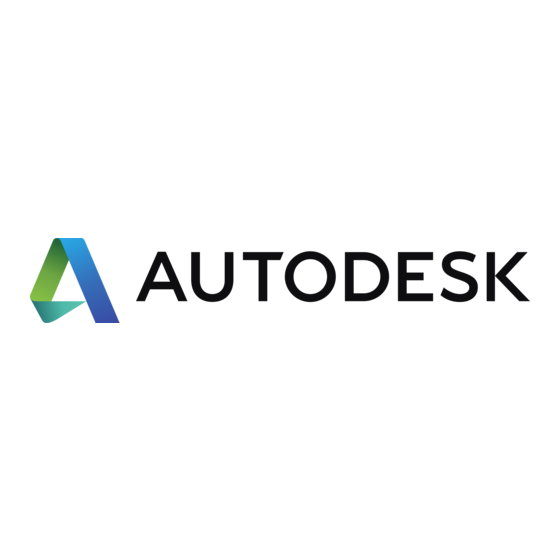
Advertisement
Quick Links
The shape of things to come
Autodesk Mudbox 2011 software delivers new tools for
helping deform and pose models, an extended texture
painting toolset, and enhanced file transfer with leading
2D and 3D applications.
After six years of
professional 3D modeling,
Mudbox continues to be
my primary sculpting
application. No other
sculpting applications is as
elegant, focused and easy
to use as Mudbox.
— Miguel Ortega
Digital Domain
Image courtesy of Milivoj Popovic.
Autodesk
®
Mudbox™ 2011 software helps accelerate
design, sculpting, and approval phases with powerful
new tools for deforming and posing models, and
the ability to create high-quality turntables for
presentations. Moreover, the texture painting toolset
is significantly extended with image adjustment
brushes and blend modes for paint layers, while a Vector
Displacement map extraction method offers new
possibilities for creating and rendering complex details.
In addition, with single-click file transfer with Autodesk
Maya
2011 software; multi-layer PSD exchange with
®
Adobe
Photoshop
; and support for Windows
®
®
Mac OS
X 64-bit operating systems, Mudbox 2011
®
fits more seamlessly into existing pipelines.
Posing Toolset
Quickly and easily deform and pose models to change
their design, access occluded regions, present them
for approval, or prepare them for map extraction.
With tools for quickly creating and editing joints,
and the ability to import weighted skeletons from
Autodesk
Maya
2011, Autodesk
®
®
or Autodesk
Softimage
2011 software, the new
®
®
toolset enables modelers to create and manipulate
poses as part of the design, sculpting, painting, or
approval process.
Image Adjustment Brushes
Selectively edit and manipulate existing paint and
photo-based layers with new image adjustment brushes:
Blur, Dodge, Burn, Contrast, Sponge, Hue, Hue Shift,
and Invert. These brushes enable existing image
data under the brush to be altered or enhanced—for
example, color-corrected, brightened, or softened.
Vector Displacements
Extract maps using a new Vector Displacement method
and represent displacements that do not simply follow
the normal: for example, forms with appendages,
undercuts, folds, and bulges, such as a human ear.
Once extracted, maps can be used to help recreate
detail at render time in supported renderers, or as
brush stamps or stencils in Mudbox to sculpt complex
detail onto meshes in a single stroke. Artists can
build up a library of commonly-used forms and
®
reuse them on models.
7 and
®
3ds Max
2011,
®
®
Image courtesy of Jacques Defontaine.
Advertisement

Summary of Contents for Autodesk AUTODESK MUDBOX 2011
- Page 1 The shape of things to come Autodesk Mudbox 2011 software delivers new tools for helping deform and pose models, an extended texture painting toolset, and enhanced file transfer with leading 2D and 3D applications. After six years of professional 3D modeling,...
- Page 2 Autodesk, 3ds Max, Maya, Softimage, FBX and Mudbox are registered trademarks or trademarks of Autodesk, Inc., and/or its subsidiaries and/or affiliates in the USA and/or other countries. All other brand names, product names, or trademarks belong to their respective holders. Autodesk reserves the right to alter product and services offerings, and specifications and pricing at any time without notice, and is not responsible for typographical or graphical errors that may appear in this document.


Need help?
Do you have a question about the AUTODESK MUDBOX 2011 and is the answer not in the manual?
Questions and answers